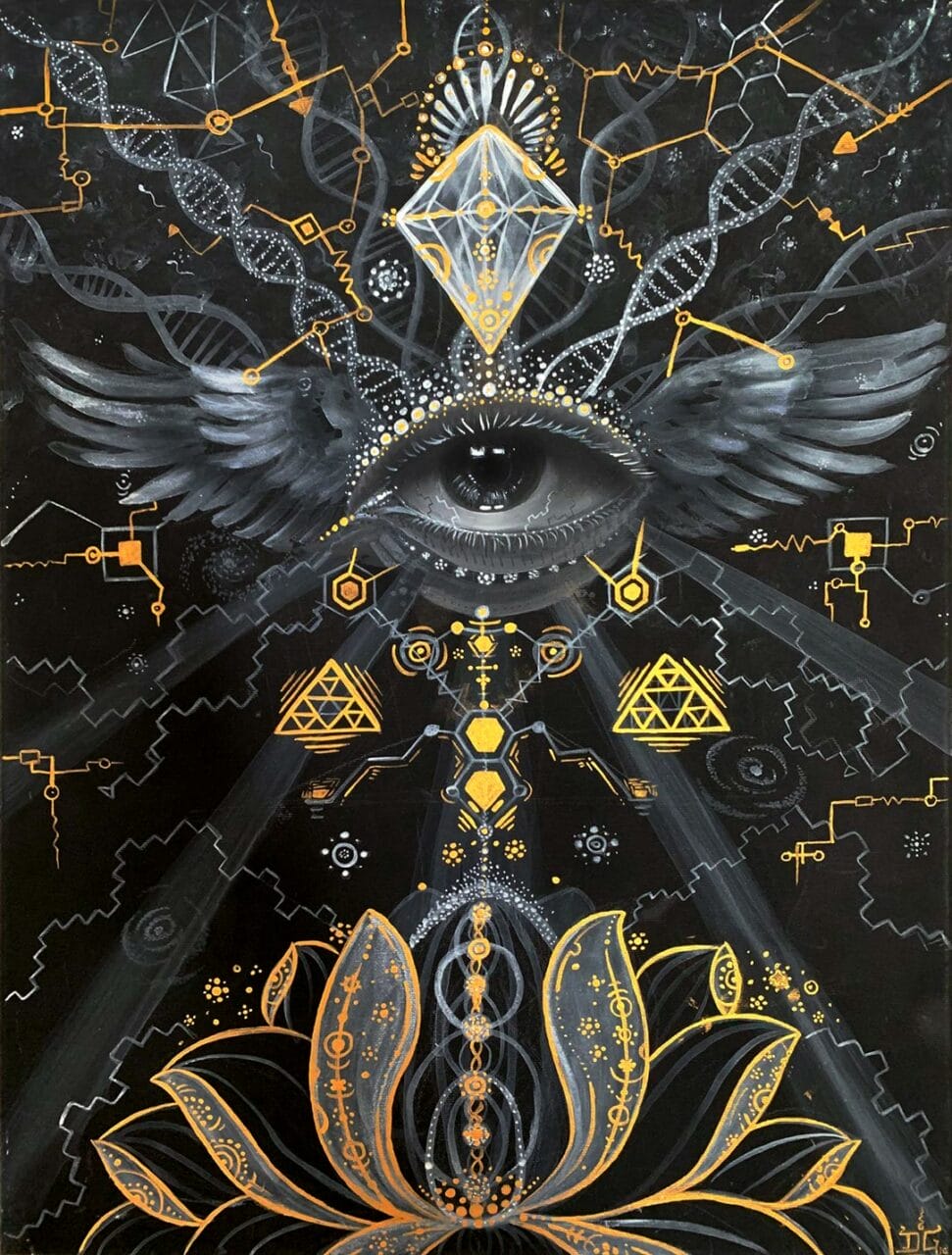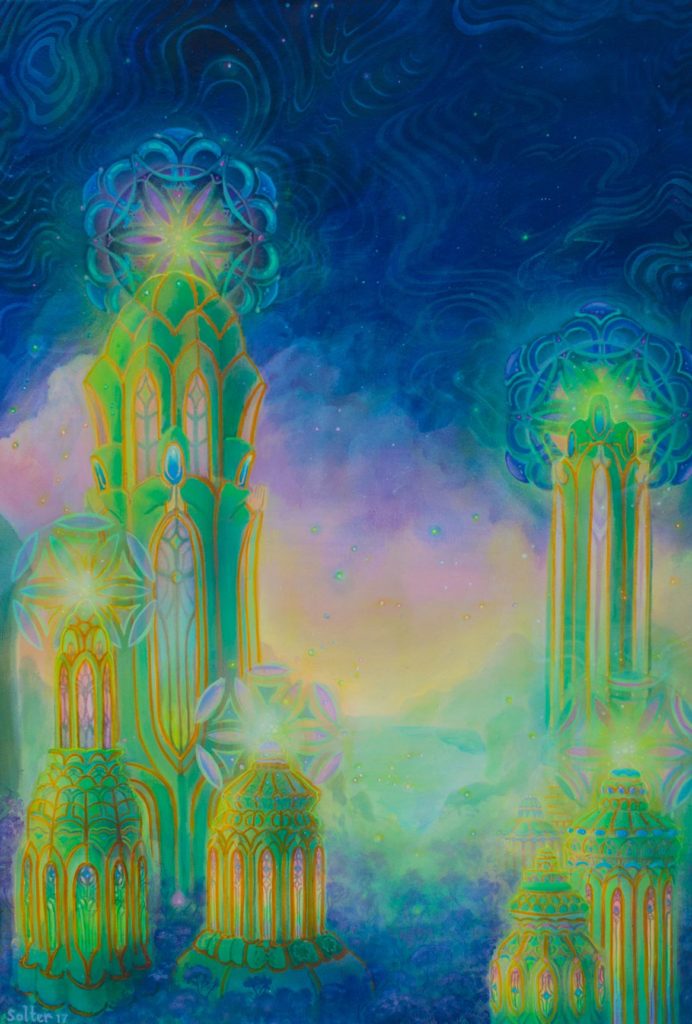
© Uni Kaya
The Historical Saga of Shrooms
Shrooms, with a history dating back to 9000 BC, belongs to a unique group of over 200 species of mushrooms that contain psilocybin, a substance known to produce hallucinations. The effects can range from altered perception and auditory hallucinations to profound spiritual experiences. For millennia, these mushrooms have been a part of spiritual rituals and ceremonies across various cultures and tribes, particularly in North and South America.
Shrooms in Ancient Times
Over time, many cultures have harnessed natural psychedelics. Evidence from the Sahara Desert suggests that humans were using Psilocybe Cubensis more than 7000 years ago. Archaeological findings depict the presence of this hallucinogenic substance in prehistoric art across different regions. For instance, tribes from North Africa in the Sahara illustrated its use in their artwork dating back to around 9000 BC. Similarly, the renowned Selva Pascuala mural rock painting in Spain, which is roughly 6000 years old, implies the use of Psilocybe Hispanica in religious rituals. The influence of these substances on societal development, religion, art, norms, and daily life is becoming more apparent. Without a doubt, this substance has made a significant mark on our culture and society.
Historical Summary of Magic Shrooms Use
Throughout history,magic Shrooms have seen extensive use. The psychoactive substance we know today has been around for centuries, with diverse cultural practices surrounding its use. Isn’t it time to appreciate nature’s gifts? Let’s join Momentum Mushroom Canada in tracing the historical path that has led Shrooms to its current state.
Main Highlights
- Dried Shrooms have been used in traditional rituals and spiritual healing for centuries. Currently, they are used as a treatment for mental health disorders.
- Shrooms became a cornerstone of the hippie culture, playing a pivotal role in the psychedelic revolution and its recreational use.
- Notable figures such as Wasson, Sabina, and McKenna were instrumental in introducing psilocybin to the modern world.

© Jonathan Solter
Backing the Stoned Ape Theory
Terence McKenna proposed the Stoned Ape Hypothesis, suggesting psilocybin’s potential role in human evolution, especially in cognitive development. Although there are some criticisms, the attraction of the theory is undeniable.
Ancient Societies and Holy Rituals
Historical societies symbolized cubes through art, symbols, and statues, indicating the ritualistic use of Shrooms. The Mayans and Aztecs used it for contacting supernatural beings, including gods. In the culturally rich Aztec society, they referred to it as “teonanácatl“, meaning “flesh of the gods”. The concept of a psychedelic experience was unfamiliar, causing them to view it as divine existence. Heading north to Siberia, hallucinogenic Shrooms were employed by Siberian shamans. They specifically used the hallucinogenic substance (Shrooms) known as “Amanita Muscaria” for spiritual healing and traditional practices, in spite of its toxic attributes. This practice dates back to about ten thousand years ago. In African tribal rituals, especially among the tribes of Congo and Zimbabwe, cubes were used for communicating with ancestors, inducing visions, and promoting spiritual healing. These historical societies provide a backdrop to contemporary psilocybin use. The reverence for this substance in these cultures originated from its sacred associations and its ability to provoke mystical experiences.
Shrooms in Mythology and Folklore
Several accounts, including those by Gordon Wasson, have highlighted the connection between Shrooms and the spiritual domain, underscoring its role in folklore and mythology as a medium for divine communication and illumination. In ancient India, the Soma—a ritualistic drink mentioned in the Vedas—was thought to induce altered states of consciousness. Scholars like Wasson speculate that it could have been brewed from psychoactive plants, specifically fly agaric. Some even suggest that this ancient drink may have contained a mixture of various plants. Regardless of its origins, the psychedelic history suggests that Soma facilitated the appearance of sacred symbols during rituals, symbolizing a portal to higher wisdom or spiritual enlightenment.
The Contemporary Era
A Synopsis of the
Beginnings
Historical documentation from the time before the Columbian exchange indicates that the Mayans and Aztecs utilized psilocybin Shrooms. During the 15th and 16th centuries, Spanish rulers deemed its usage as uncultured and subsequently outlawed it. Despite the ban, shamans secretly maintained the consumption of magic Shrooms, thereby keeping their cultural traditions alive for over 400 years.
Reemergence in the Western World
The 1950s saw the reemergence of these substances in Western society, courtesy of the groundbreaking work of individuals like R. Gordon Wasson, Roger Heim, and Albert Hofmann. During their expedition to Mexico, they managed to isolate the two psychedelic components (psilocybin and psilocin) present in the Shrooms obtained from the Mazatec tribe. Wasson went on to share his voyages, uses, and perspectives on magic Shrooms in Life magazine. His articles and personal narratives led to the substance being recognized as a potent hallucinogen. By the onset of the 1960s, the substance had become emblematic of the Hippie movement and was perceived as a portal to spiritual adventures. However, its usage also stirred considerable debate and triggered a transformation in the recreational consumption of hallucinogenic substances.
Continued Evolution: Universal Prohibition
In 1971, the United Nations Convention on Psychotropic Substances classified psilocybin as a Schedule 1 illegal drug, alongside Lysergic Acid Diethylamide and N, N-Dimethyltryptamine. At that point, they were all considered to have no therapeutic value and a high risk of misuse. This led to widespread criminalization in Western nations, including Canada and the U.S., severely limiting the spiritual and therapeutic uses of the substance.
The Modern Resurgence of Psilocybin
In recent years, there has been an easing of the strict laws surrounding the usage of psilocybin, starting with its decriminalization. This shift is in line with the UN’s provision for treaty member countries to regulate the substance as per their own judgement. Simultaneously, an increasing body of research and clinical trials related to psychedelics and consciousness solidly endorses potential medicinal uses of psilocybin. A study conducted in 2021 on the therapeutic application of psychedelics suggests that the 1970 ban significantly hindered further research. However, a preliminary study in 2004 rekindled interest in psilocybin, suggesting potential applications in neuropsychiatry, specifically for treating mental health conditions such as:
- Depression, Anxiety, and Stress
- Post-traumatic Stress Disorder (PTSD)
- Obsessive-compulsive Disorder (OCD)
- Drug Addiction (Aiding in Recovery from Dependence)
- Excessive Alcohol Consumption and Drugs)
Media and Art’s Influence
Psychedelic cubes are now referenced in many formats, due to the wide-ranging discussions around them. The renewed interest in these substances is fueled by their portrayal in several media outlets, art pieces, and literary works. Movies like “Fantastic Fungi” by Director Louie Schwartzberg, and documentaries exploring their healing properties, have enhanced public understanding of their psychological and physical effects. Michael Pollan, the writer of “How to Change Your Mind,” has studied the use of psychedelics for mental health and spiritual development, rekindling the conversation around their societal and therapeutic relevance.
Prominent Historical Advocates of Fungi
- María Sabina: Sabina, a Mazatec shaman and poet from Mexico, contributed to the introduction of cubes to the Western world. She allowed Wasson to observe her Shrooms rituals.
- Gordon Wasson: Wasson, a writer, gained recognition for bringing the drug to global attention. His detailed account of his experiences with Sabina led to a broader understanding of its local use.
- Terence McKenna: McKenna, a strong supporter of psychedelics, significantly emphasized their cultural and philosophical significance. He popularized the “Stoned Ape” theory through his speeches, writings, and research, presenting it as a cognitive enhancement tool that shaped society.
A Snapshot of the Timeline
with TRD.
| Prehistoric | Stone art discovered in the Sahara, Africa, indicates prehistoric usage |
| Ancient | The Maya and Aztec civilizations incorporated teonanácatl in their religious and spiritual rites. |
| 16th Century | Its use was discouraged due to its association with indigenous beliefs |
| 18th Century | The “intoxicating” effects of the drug came to light in 1799 when four children accidentally consumed Psilocybe Semilanceata, which underscored its potential harmful effects. |
| 20th Century | Wasson and Sabina introduced the drug to the Western world, sparking a psychedelic revolution among hippies. The UN legalized the possession and use of the substance. |
| 21st Century | Clinical trials to establish its medical benefits are increasing. It has gained authorization from Health Canada for use through a Special Access Program. |
The Emergence and Evolution of Psychedelic Era | Purchase Shrooms Online at Momentum Mushroom Canada
Regular use of ‘cubes’ at Momentum Mushroom Canada, backed by robust scientific research, is on the path of steady growth, moving towards worldwide acceptance. At Momentum Mushroom Canada, our online Shrooms store is fully equipped to facilitate this shift. With a vast assortment of products, we encourage our customers to embark on the intriguing and healing journey of psilocybin. Secure your top picks from Zoomies today.
Commonly Asked Questions
No, Amanita Muscaria does not contain the active ingredients that are present in Psilocybe Cubensis. Instead, it contains the psychoactive compounds muscimol and ibotenic acid. A prevalent theory regarding Soma’s origin denotes it as a mix of different psychoactive plants. Likewise, ayahuasca is a mind-altering drink. The only link between the two is the perception of soma as an ayahuasca analogue. Once classified as a toxic Shrooms, it became subject to investigation for potential Shrooms poisoning. In the present day, it is recognized as the Psilocybe Mexicana.

